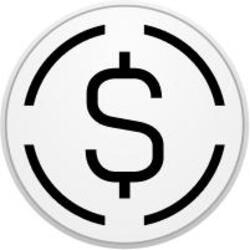Less than three months after his inauguration, President Donald Trump already raised, implemented — and, in some cases, reversed — tariffs on the U.S.’ three largest trading partners by value of goods: Canada, Mexico and China. On March 26, the president ordered a new round of tariffs on imported vehicles to start in April.
The stock market has reacted swiftly. The S&P 500 entered a market correction in mid-March, and major indexes have remained volatile.
Investors may be wondering how to navigate this new reality. While you can’t control tariffs or the markets, what you can control is your reaction to them — and what’s in your portfolio. Here’s what to do to ride out the waves.
Getting comfortable with uncertainty
Markets initially rallied on the news of Trump’s election win, expecting fewer business regulations. But the tariffs have dampened that enthusiasm for the time being.
“Tariffs raise production costs for U.S. firms. We tend to think of this as bad for corporate earnings,” said Mark Boileau, the chair of the economics department at the University of Colorado Boulder, in an email interview. He added that retaliatory tariffs — such as those China and Canada have already imposed on the U.S. — could compound the economic losses.
But the long-term impact of tariffs isn’t always easy to predict, says Darius Gagne, a certified financial planner and the chief investment officer of the California-based firm Quantum Financial Advisors.
Gagne notes that during Trump’s first term, the U.S. imposed tariffs on China, and yet both the U.S. and Chinese stock markets had net gains from January 2017 to January 2021. Both countries reported a net increase in GDP over that time as well, despite the effects of tariffs and the COVID-19 pandemic.
Either way, this is not the time to panic sell or make any other rash decisions with your existing portfolio.
“If we do have drops in the stock market, they’re going to be temporary, and it creates buying opportunities. You just ride it out, and you keep accumulating and saving into your portfolio, buying at possibly lower prices,” Gagne says.
“The only reason to make a big change to your portfolio is if you have big changes to your goals. If your goals haven’t changed, you shouldn’t be changing your portfolio. These types of situations are what a well-crafted investment plan is set up to deal with, so let it deal with it,” he says.
Advertisement
|
NerdWallet rating
4.8 /5 |
NerdWallet rating
4.6 /5 |
NerdWallet rating
4.5 /5 |
|
Fees $0 per online equity trade |
||
|
Promotion None no promotion available at this time |
Promotion Earn up to $10,000 when you transfer your investment portfolio to Public. |
Promotion Get up to $700 when you open and fund a J.P. Morgan Self-Directed Investing account with qualifying new money. |
Navigating tariffs: Investments to consider
Tariff-related volatility isn’t a good reason to drastically change your portfolio, but it may be worth thinking about when deciding where to invest new money. Foreign stocks, recession-resistant domestic stocks such as health care stocks and bonds could be worth considering.
International stocks
“Probably the single best thing I can advise is global diversification,” Gagne says. That’s because international stocks aren’t necessarily affected by U.S. tariffs (or retaliatory tariffs against the U.S.) in the same way as U.S. stocks. They’re also on a hot streak right now.
“International stocks have really struggled over the past number of years, but this year we’ve seen a very noticeable turnaround,” Gagne says. As an example, the Vanguard FTSE All-World ex-US Index Fund ETF (VEU) is up more than 5% year to date as of this writing, while the S&P 500 is down.
How much of their portfolios should investors allocate to foreign stocks? Gagne says the right percentage will vary, but one potential rule of thumb is to follow the ratio between the total U.S. stock market capitalization and the total world stock market cap.
“In terms of global market caps, the U.S. is something like 65% of the global stock market,” Gagne says. Based on that number, an investor might consider building a stock portfolio that is about two-thirds U.S. stocks and one-third foreign stocks, but there’s no one-size-fits-all rule.
Stock research is a complicated and time-consuming process with domestic stocks, let alone international ones. One easy way to get international stock exposure is through broad international stock ETFs. Many stock screeners allow users to filter ETFs as well, so you can search for “global,” “world” or “ex-U.S.” funds.
Recession-resistant U.S. stocks
It’s hard to pinpoint domestic stocks that would be completely unaffected by tariffs. Even companies that mostly rely on domestic revenue and do little business abroad could be threatened by a tariff-related economic downturn.
While there are no fully recession-proof stocks, certain sectors of the U.S. stock market, such as health care stocks, have a history of weathering downturns better than others. A 2024 paper in the Health Economics journal found that health care employment generally remains stable during recessions induced by supply disruptions such as tariffs.
Bond ladders
For retirees or those nearing retirement, Gagne says that bonds can also cushion a portfolio against stock market volatility. “One strategy to think about is something like a five-year bond ladder,” he says.
Bond ladders involve buying multiple bonds with staggered maturity dates in order to provide monthly or annual cash flow, which can be withdrawn or reinvested.
The bottom line on tariff-resistant investing
It’s too early to say what the long-term impact of the new tariffs will be, but tariff-related volatility is already here. Experts say that some investments may hold up better than others, but they also say that it’s important not to panic and make impulsive investment decisions.
That’s a lot to keep in mind — and if you’re struggling to figure out what to do, you may want to get an expert of your own. A financial advisor can provide valuable insights on how to get your portfolio ready for whatever the future brings.
Neither the author nor editor owned positions in the aforementioned investments at the time of publication.












































